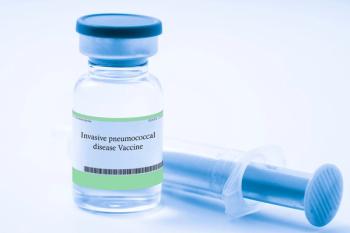Drug-induced liver injury (DILI) continues to be a challenge when it comes to reporting and identifying the medications that cause liver injuries.1 Despite researchers exploring pharmacoepidemiologic methods, EHR data, and the gut microbiota’s role in identifying DILI, further research is needed for gastroenterologists, hepatologists, and other providers to address issues regarding liver injury.2
“With an ever-increasing array of both prescription and nonprescription drugs entering the marketplace, accurately diagnosing drug-induced liver injury (DILI) remains a persistent challenge. Although DILI is reported to occur in 14 to 19 individuals per 100 000, these figures fail to acknowledge the staggering mortality rates and health care costs associated with DILI-associated acute liver failure,” wrote authors of a study published in JAMA Internal Medicine.1
Put It Into Practice
Incorporate these strategies into your pharmacy practice to improve patient outcomes.
- Advise patients to discuss any new medications with their doctor.
- Educate patients about the risk of DILI.
- Encourage patients to monitor their liver health.
Currently, the most widely available method for reporting and understanding the epidemiology of DILI is a case report-based reference for measuring hepatotoxic risk known as LiverTox. The reference, created by the National Institute of Diabetes and Digestive and Kidney Diseases in 2012, is a way for providers to access information regarding each drug’s relation to liver disease. The issue with LiverTox is significant instances of underreporting and varied perspectives on the definitions of acute liver injury.
READ MORE: Clinical Pharmacists Play Pivotal Role in Managing Inflammatory Bowel Disease
“Innovation in pharmacovigilance is needed to address these challenges and complement clinical trials by improving the sensitivity and specificity of [adverse drug reaction] detection and streamlining the process of refining [real‐world data] into [real‐world evidence] that supports regulatory decision making,” wrote authors of a study published in Clinical Pharmacology & Therapeutics.3
The development of electronic health records (EHRs) and technology within health care as a whole can significantly improve reporting going forward. Using clinical Veterans Affairs (VA) data, researchers implemented the use of EHRs to significantly boost the real-world evidence for drug interactions regarding DILI.
“In this issue of JAMA Internal Medicine, Torgersen et al introduced the potential of an innovative methodologic approach to substantially improve understanding of patient risk for hepatotoxic effects. In this cohort study, the authorsused pharmacoepidemiologic methods, a burgeoning field focused on the interactions between medications and populations, to analyze more than 10 years [VA] data, which allowed them to reevaluate the actual DILI risk for nearly 200 potentially hepatotoxic medications,” they continued.1
With the inception of pharmacoepidemiologic methods and EHR data to further understand adverse drug reactions, providers and researchers must gradually learn how to properly utilize these new resources. Researchers in the Torgersen et al trial considered previous knowledge—like statins being a common medication associated with DILI and choosing to focus on the conservative outcome of hospitalization for liver injuries—to further boost the success of their results.
“Such decisions to simplify analyses are essential, yet they mean that additional verification is needed to fully understand the problem,” wrote the authors.1
Furthermore, addressing the role of the digestive system in DILI, researchers from Cellular and Molecular Gastroenterology and Hepatology addressed the gut microbiota’s role in identifying drug interactions and outcomes. They predicted that the gut microbiota can contribute to DILI “by increasing intestinal permeability, disrupting intestinal metabolite homeostasis, and promoting inflammation and oxidative stress.”2
From antibiotics and psychotropic drugs to acetaminophen and antithyroid medications, they also identified medications with previous evidence of gut microbiota associations.
“Recent research has indicated the significant involvement of gut microbiota in the pathogenesis of [DILI]. Nevertheless, there remains a dearth of comprehensive research into the mechanism of gut microbiota involvement in [DILI], and there is no targeted approach for [DILI] prevention and treatment. Therefore, the relationship between gut microbiota and [DILI] needs more research,” they wrote.2
Whether it’s targeting the gut microbiota’s role or working with new technology like EHRs, most of the aforementioned research highlights the need for further evidence regarding the mechanisms of identifying and preventing DILI. Furthermore, Torgersen et al’s exploration of DILI provides further evidence for possible shifts in pharmacovigilance as a whole.
“Challenging previously held beliefs about drug-related toxic effects may prove uncomfortable for practitioners at first, but it is an essential step in advancing both science and clinical care. For the last decade, the field of hepatology has been a leader in the assessment, categorization, and dissemination of information about drug-related adverse effects. Torgersen and colleagues continue to spearhead research in this area, bringing pharmacovigilance into the modern era by effectively harnessing the power of real-world clinical data,” concluded authors of the study.1
READ MORE: Digestive Health Resource Center
Are you ready to elevate your pharmacy practice? Sign up today for our free Drug Topics newsletter and get the latest drug information, industry trends, and patient care tips, straight to your inbox.
References
1. Zhang GY, Rubin JB. Rethinking drug-induced liver injury—a new era of pharmacovigilance. JAMA Intern Med. 2024;184(8):952–953. doi:10.1001/jamainternmed.2024.1833
2. Li G, Hou Y, Zhang C, et al. Interplay between drug-induced liver injury and gut microbiota: A comprehensive overview. Cell Mol Gastroenterol Hepatol. 2024;18(3):101355. doi: 10.1016/j.jcmgh.2024.05.003. Epub 2024 May 9. PMID: 38729523; PMCID: PMC11260867.
3. Lavertu A, Vora B, Giacomini KM, et al. A new era in pharmacovigilance: Toward real-world data and digital monitoring. Clin Pharmacol Ther. 2021 May;109(5):1197-1202. doi: 10.1002/cpt.2172. Epub 2021 Feb 28. PMID: 33492663; PMCID: PMC8058244.














































































































































